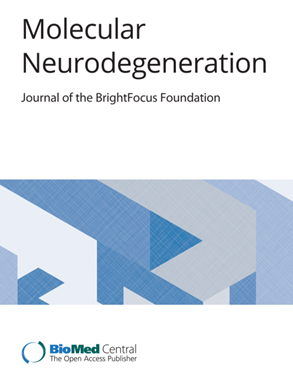Alzheimer blood biomarkers: practical guidelines for study design, sample collection, processing, biobanking, measurement and result reporting
IF 14.9
1区 医学
Q1 NEUROSCIENCES
引用次数: 0
Abstract
Alzheimer’s disease (AD), the most common form of dementia, remains challenging to understand and treat despite decades of research and clinical investigation. This might be partly due to a lack of widely available and cost-effective modalities for diagnosis and prognosis. Recently, the blood-based AD biomarker field has seen significant progress driven by technological advances, mainly improved analytical sensitivity and precision of the assays and measurement platforms. Several blood-based biomarkers have shown high potential for accurately detecting AD pathophysiology. As a result, there has been considerable interest in applying these biomarkers for diagnosis and prognosis, as surrogate metrics to investigate the impact of various covariates on AD pathophysiology and to accelerate AD therapeutic trials and monitor treatment effects. However, the lack of standardization of how blood samples and collected, processed, stored analyzed and reported can affect the reproducibility of these biomarker measurements, potentially hindering progress toward their widespread use in clinical and research settings. To help address these issues, we provide fundamental guidelines developed according to recent research findings on the impact of sample handling on blood biomarker measurements. These guidelines cover important considerations including study design, blood collection, blood processing, biobanking, biomarker measurement, and result reporting. Furthermore, the proposed guidelines include best practices for appropriate blood handling procedures for genetic and ribonucleic acid analyses. While we focus on the key blood-based AD biomarkers for the AT(N) criteria (e.g., amyloid-beta [Aβ]40, Aβ42, Aβ42/40 ratio, total-tau, phosphorylated-tau, neurofilament light chain, brain-derived tau and glial fibrillary acidic protein), we anticipate that these guidelines will generally be applicable to other types of blood biomarkers. We also anticipate that these guidelines will assist investigators in planning and executing biomarker research, enabling harmonization of sample handling to improve comparability across studies.阿尔茨海默氏症血液生物标志物:研究设计、样本采集、处理、生物库、测量和结果报告实用指南
阿尔茨海默病(AD)是最常见的痴呆症,尽管经过数十年的研究和临床调查,但对它的理解和治疗仍然具有挑战性。造成这种情况的部分原因可能是缺乏广泛可用且具有成本效益的诊断和预后方法。最近,在技术进步的推动下,基于血液的注意力缺失症生物标志物领域取得了重大进展,主要是提高了分析灵敏度和测定平台的精确度。一些基于血液的生物标志物已显示出准确检测注意力缺失症病理生理学的巨大潜力。因此,人们对将这些生物标志物用于诊断和预后、作为替代指标用于研究各种协变量对注意力缺失症病理生理学的影响以及加速注意力缺失症治疗试验和监测治疗效果产生了浓厚的兴趣。然而,血液样本的采集、处理、储存、分析和报告方式缺乏标准化,会影响这些生物标记测量的可重复性,从而可能阻碍其在临床和研究环境中的广泛应用。为了帮助解决这些问题,我们根据最近关于样本处理对血液生物标记物测量影响的研究成果,提供了基本的指导原则。这些指南涵盖了包括研究设计、血液采集、血液处理、生物库、生物标记物测量和结果报告在内的重要注意事项。此外,建议指南还包括基因和核糖核酸分析中适当血液处理程序的最佳实践。虽然我们重点关注 AT(N) 标准的主要血液 AD 生物标记物(如淀粉样β [Aβ]40、Aβ42、Aβ42/40 比值、总 tau、磷酸化 tau、神经丝轻链、脑源 tau 和神经胶质纤维酸性蛋白),但我们预计这些指南将普遍适用于其他类型的血液生物标记物。我们还预计,这些指南将有助于研究人员规划和执行生物标记物研究,从而统一样本处理方法,提高各项研究的可比性。
本文章由计算机程序翻译,如有差异,请以英文原文为准。
求助全文
约1分钟内获得全文
求助全文
来源期刊

Molecular Neurodegeneration
医学-神经科学
CiteScore
23.00
自引率
4.60%
发文量
78
审稿时长
6-12 weeks
期刊介绍:
Molecular Neurodegeneration, an open-access, peer-reviewed journal, comprehensively covers neurodegeneration research at the molecular and cellular levels.
Neurodegenerative diseases, such as Alzheimer's, Parkinson's, Huntington's, and prion diseases, fall under its purview. These disorders, often linked to advanced aging and characterized by varying degrees of dementia, pose a significant public health concern with the growing aging population. Recent strides in understanding the molecular and cellular mechanisms of these neurodegenerative disorders offer valuable insights into their pathogenesis.
 求助内容:
求助内容: 应助结果提醒方式:
应助结果提醒方式:


